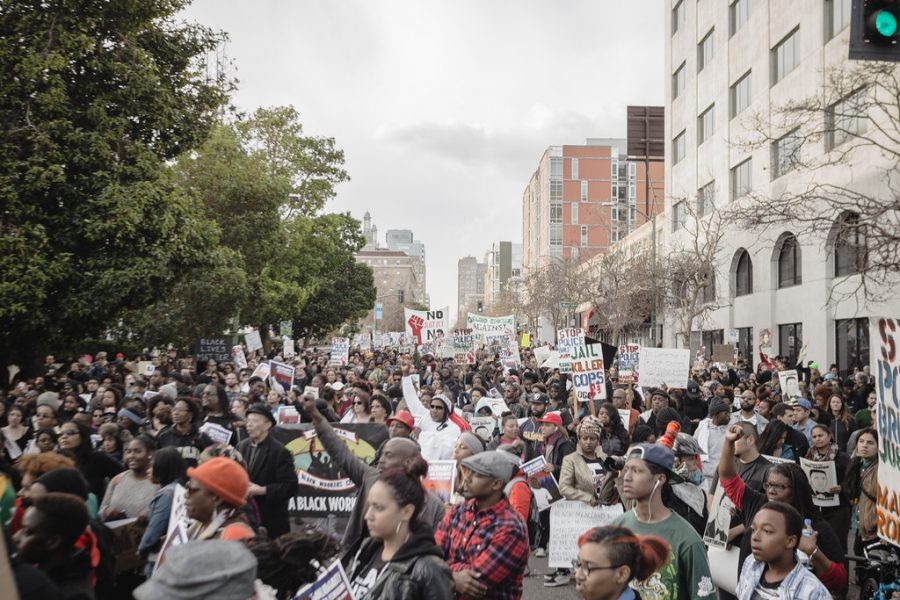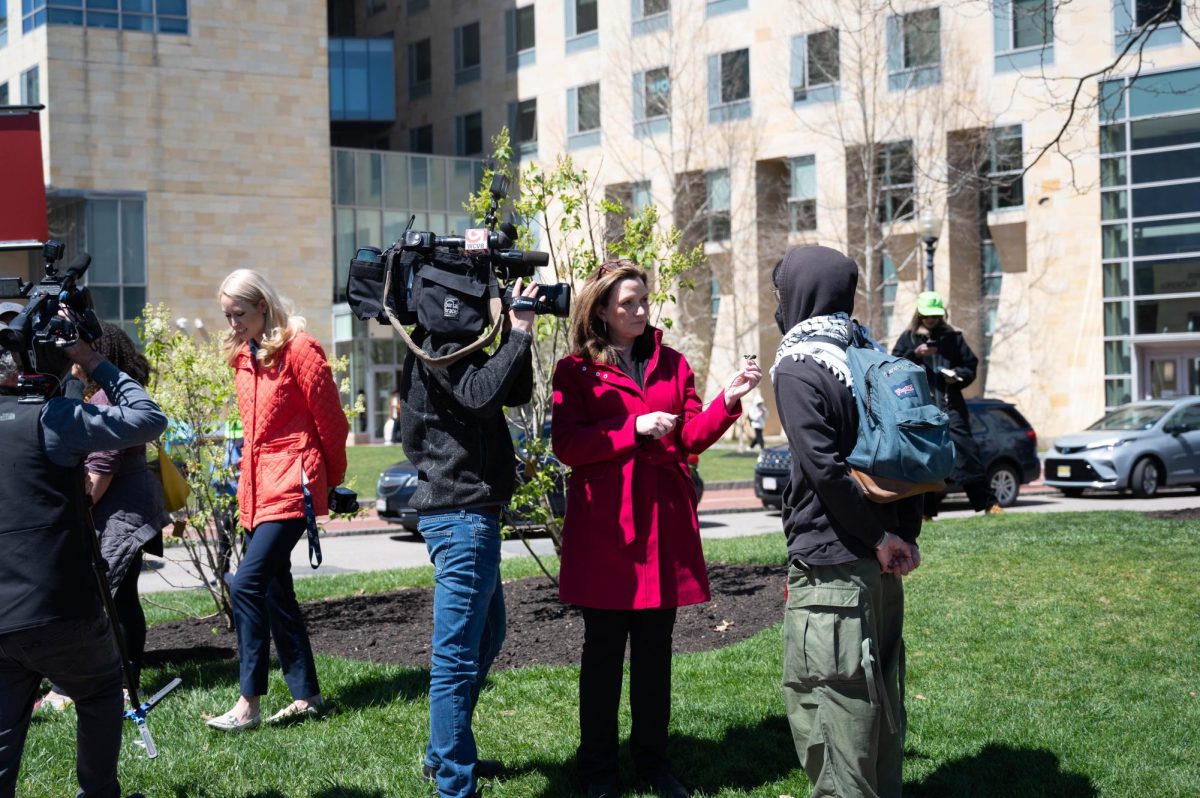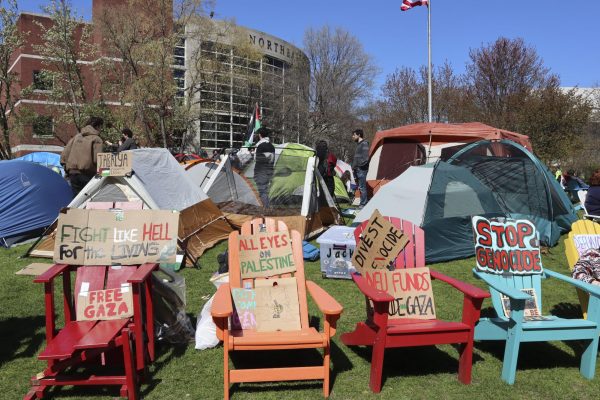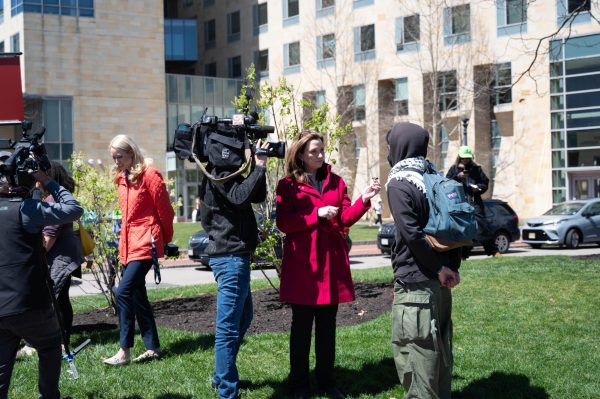Column: The views of the far-left are rooted in good merits; those of the far-right are not
"Millions March: Oakland" by amir is licensed under CC BY-ND 2.0
Americans across the country protested against racial injustice.
December 6, 2020
I’m friends with communists and socialists, and they are some of the most kind-hearted people I know. I’ve never met a fascist I liked one bit.
In a recently published Huntington News op-ed, the author wrote that if someone you know is leaning more towards the extreme left or right side of the aisle you should cut them out. These friends — the author suggests — are not willing to engage in civil discourse or participate in “good” politics.
Equating both sides’ actions is a misguided argument. To the aforementioned author, the two sides are comparable in their extremity. This is simply not the case.
Many members of the far-right come from an already privileged group whose sole mission is to maintain systems of oppression against anyone who isn’t a straight white man. Those on the far-left seek to empower those who have been oppressed to create a free and just society.
Do these people seem the same to you?
To further clarify the distinct differences, let’s compare the Proud Boys and the Black Panther Party, two groups that represent the far-right and far-left, respectively.
Most media sources are quick to label “Antifa” as the source of current far-left action; however, Antifa is not an organization. It’s a loose collective of similarly minded people who strive to destroy the far-right movement through any means necessary. The Black Panthers, on the other hand, were an openly Marxist-Leninist organization who actively strove to teach and practice socialist thought in Black communities. The Panthers were a real political party; Antifa only exists as an ad hoc movement.
The two groups I’ve selected are not ad hoc collectives; rather, they were and still are influential groups in contemporary American politics. Though the Black Panthers dissolved in the 1970s and the Proud Boys were founded in 2016, they are the groups that the respective sides aspire to mimic.
Originally an online movement, the Proud Boys are a far-right extremist group whose ideology revolves around nationalism and white supremacy. Their goal is to restore so-called “western civilization values,” which revolve around the continual oppression of non-white peoples. The group openly attacks anyone who threatens their “values” while also claiming they are acting in self-defense against a non-white mob.
The group actively and passively incites violence, whether it be against counter-protestors in Charlottesville in 2017 or Black Lives Matter protests this year. Members of the group are often seen at protests brandishing firearms and military gear, illustrating that they are more than willing to start or finish the violence. In fact, the fourth tier of membership in the group is achieved through committing violence “for the cause.”
The Proud Boys may claim self-defense, but the Black Panther Party, or BPP, was actually fighting for survival.
As one of the most significant Marxist-Leninist movements in the United States, the Panthers are often unfairly framed as a group of armed Black men promoting needless violence.
In reality, the Panthers only carried firearms in self-defense to sufficiently protect themselves and their community from the violence of a racist policing program. This point was made clear in the party’s news publication “The Black Panther,” which read, “We are not out to kill white people. On the contrary, it is the cops who claim the right to indiscriminate violence and practice it every day.” Since nonviolent protests did not end the bloodshed, new confrontational measures were needed to overthrow — not reform — a racist system.
The Panthers strove not only to protect but empower Black people. The group used its “Survival Programs” to feed, educate and support the Black community. Fighting against hunger, mutual aid organizations provided free groceries to the poor and free breakfasts to school children. Fighting against healthcare discrimination, free health clinics offered testing for sickle cell anemia and other diseases. Fighting against a euro-centric school system, education and after-school programs taught children and adults about the role of Black people in history and contemporary systems of oppression. While these programs may not seem controversial, the Panther’s goal was always to prepare Black Americans to participate in a revolution against these systems, for only then would racism be fully eliminated. That message of revolutionary change is as radical today as it was 50 years ago.
Last summer, one could see the spirit of the party echoed in the Black Lives Matter movement, both online and on the streets. The BPP’s radical ideas reemerged in the current demands and protests to abolish the police and prisons. Moreover, the revolutionary writings of leaders from the BPP have garnered newfound attention among far-left activists.
Similarly, the rage that prompted the Panthers to arm themselves against police brutality is the same rage that led to the protests against the police this summer. It is the rage of a people who have been systemically, socially and culturally brutalized for four hundred years — the rage of a people who have demanded change and received little. The dollar amount of damage done during the protests pales in comparison to these centuries of oppression. These actions of rage are justified.
The Proud Boys carry guns to intimidate and harm with the help of neo-Nazis, white supremacists and fascists. They act to hurt, never to help. This is who the far-right follows.
The Black Panthers may have openly carried weapons, but their sole purpose was to defend themselves against a violently racist local and federal police force. Beyond the guns, the group acted to better the lives of Black people and build a national movement against oppression and racism. This is who the far-left follows.
So, I’ll ask once again: are both sides the same?
George LaBour is a fourth-year combined economics and history major. He can be reached at [email protected].


















